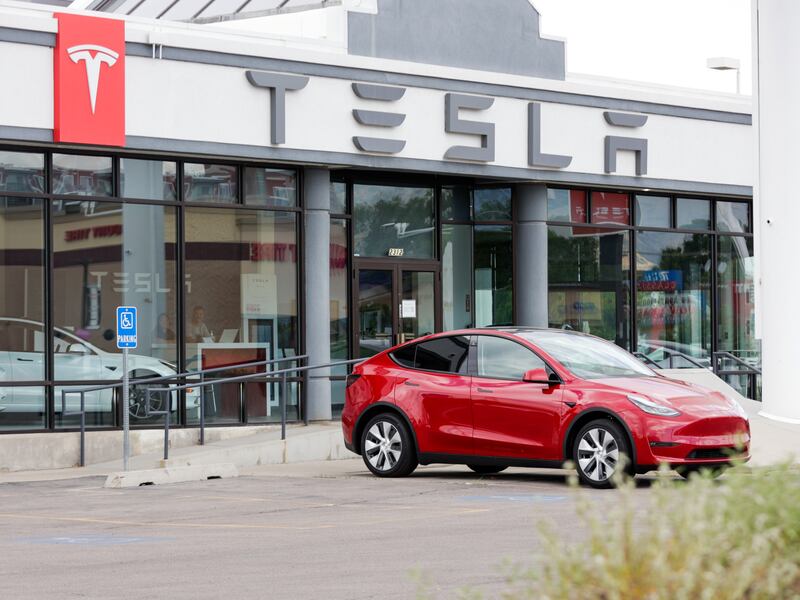Electric vehicle maker Tesla issued a recall notice on Tuesday that impacts over 2 million vehicles — nearly every car it has ever sold in the U.S. — following the conclusion of a two-year long investigation by federal regulators into Tesla’s driving automation features.
In a letter to Tesla, the National Highway Traffic Safety Administration said it had reviewed 956 Tesla crashes where the manufacturer’s Autopilot was initially alleged to have been in use, then focused on a narrower set of 322 Autopilot-involved crashes, including frontal impacts and impacts from potential inadvertent disengagement of the system.
Federal regulators determined that the current configuration of Tesla’s driving automation systems can put drivers in hazardous situations.
“In certain circumstances when Autosteer is engaged, and the driver does not maintain responsibility for vehicle operation and is unprepared to intervene as necessary or fails to recognize when Autosteer is canceled or not engaged, there may be an increased risk of a crash,” the NHTSA wrote in its letter to Tesla.
Per the recall, Tesla will issue over-the-air software updates to most owners of Model 3, Model S, Model X and Model Y vehicles that will increase the number of alerts and warnings that the driving automation software issues to drivers to ensure they are engaged, or ready to engage, with driving responsibility.
After the recall, Teslas with Autosteer turned on will more routinely check on the driver’s attention level — and may disengage the feature — when the software determines the driver isn’t paying attention, when the car is approaching traffic controls, or when it’s off the highway when Autosteer alone isn’t sufficient to drive the car, according to a report from CNN,
Tesla’s Autopilot is designed to help vehicles steer, change speed, brake and remain in its lane of travel and an enhanced version can also assist with lane change maneuvers. Autosteer is a component of Autopilot that can maintain a set speed and following distance. A warning posted on Tesla’s website notes that Autosteer is “intended for use on controlled-access highways with a fully attentive driver.”
While Tesla said it did not agree with the NHTSA’s findings but would issue an over-the-air software update that will “incorporate additional controls and alerts to those already existing on affected vehicles to further encourage the driver to adhere to their continuous driving responsibility whenever Autosteer is engaged,” per Reuters.
Earlier this week, The Washington Post published results of its own investigation into accidents involving Tesla vehicles that included analysis of two federal databases, legal records and other public documents. The Post reported on eight fatal or serious wrecks involving Tesla Autopilot on roads where the driver assistance software could not reliably operate. According to the report’s findings, the first crash occurred in 2016, when a Tesla plowed under a semi-truck on a U.S. route in Florida. The most recent was in March when a Tesla in Autopilot failed to slow down, police said, and hit a teenager stepping off a North Carolina school bus at 45 m.p.h.
In all, the Post said it had identified about 40 fatal or serious crashes since 2016 involving Tesla’s driver assistance software; the bulk of them were identified through NHTSA’s data, and the rest surfaced through lawsuits. Many occurred on controlled-access highways, according to the Post, but at least eight occurred on roads where Autopilot was not designed to be used.
Tesla has maintained since the advent of its driver-assist technology that the features make their cars the safest currently on the road.
“At Tesla, we believe that technology can help improve safety,” reads a posting on Tesla’s website. “That’s why Tesla vehicles are engineered to be the safest cars in the world.
“We believe the unique combination of passive safety, active safety, and automated driver assistance is crucial for keeping not just Tesla drivers and passengers safe, but all drivers on the road. It’s this notion that grounds every decision we make — from the design of our cars, to the software we introduce, to the features we offer every Tesla owner.”


